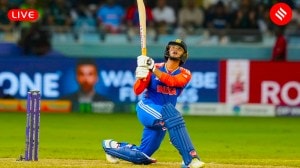Safety record derailed, Railways puts revamped relief on track
Who can forget the haunting image of Siva Ramakrishna trapped in a derailed Golconda Express waiting for death as relief kept away? The Rail...

Who can forget the haunting image of Siva Ramakrishna trapped in a derailed Golconda Express waiting for death as relief kept away? The Railways says it hasn’t either, and is promising it won’t happen again.
Waking up to the need for quick rescue and relief operations, which could have saved Ramakrishna on July 3, 2003, the Railways is modernising its Accident Relief Medical Vans (ARMVs) and Accident Relief Trains (ARTs).
Besides being self-propelled—that is, equipped with own diesel engines—the freshly painted coaches will have the entire range of modern gear, starting from German-made hydraulic cutters and modern communication facilities to a running operation theatre and a drugstore, to make the difference between life and death. The response time: 15 minutes at day and 30 minutes at night.
Parked at Saharanpur railway station, the coaches have ‘‘a 345 Horse Power in-built diesel engine and can run in either direction at 100 kmph’’, says Ashok Sharma, Senior Divisional Mechanical Engineer, in-charge of medical relief and accident relief coaches. Apart from other equipment, technical staff and experts, both the AMRV and ART are also stocked with 10 VHF sets, telephones which can be attached to the poles alongside the tracks and megaphones. In addition, they have kitchens for the staff and a resting area.
From the inside of an AMRV, it’s hard to tell you are aboard a railway coach. It could well be a hospital operation theatre, with a bed, saline drips, oxygen cylinders, prepared dressings and Ambo bags for assisted respiration. ‘‘We can carry out almost all emergency and life-saving treatment here,’’ says Dr I.J. Sharma, in-charge of the medical van and also of the local railway hospital at Saharanpur. The remaining part of the coach has been converted into a three-tier ward, also housing a drugstore, drawers containing stretchers, and bodybags for the dead.
The insides of the ART or the relief train are equally impressive. It has equipment not just to extricate trapped passengers—cutters, pulling device to separate coaches and Claw Jack to lift capsized ones—but to also make the affected track operational as soon as possible.
Ram Gopal, who has a 20-year experience in accident relief work, displays the newly acquired Inflatable Tower Light—a mercury-based emergency lighting system to illuminate a remote accident site at night.
Photos



- 01
- 02
- 03
- 04
- 05



























